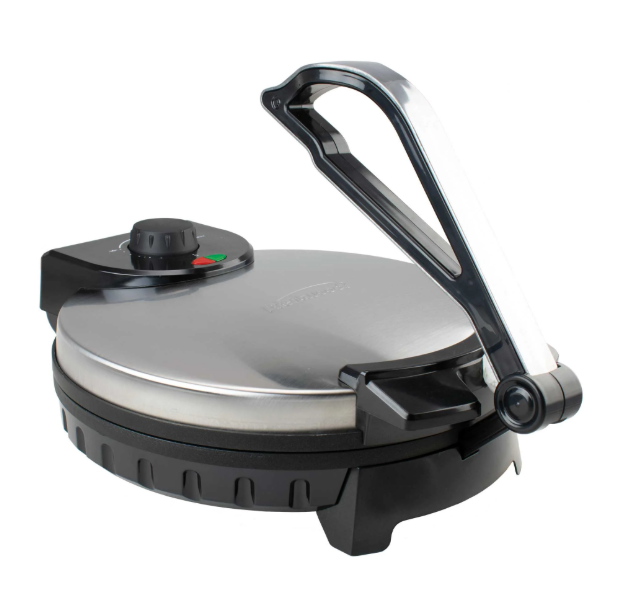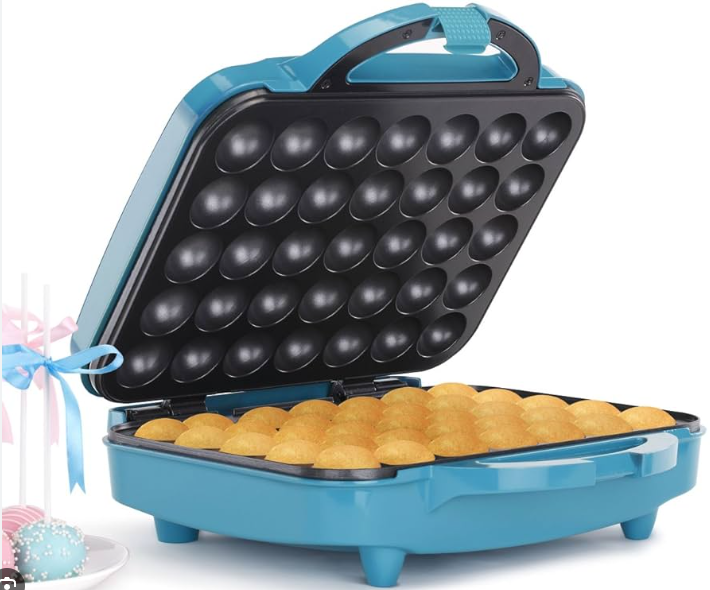In the bustling world of home baking, a quiet cake maker offers a serene escape from the typical noise of kitchen appliances. These innovative devices allow you to bake cakes, cupcakes, or cake pops with minimal sound, making them ideal for early morning or late-night baking sessions without disturbing the household. This quiet cake maker review explores the features, benefits, and practical tips for using these silent baking heroes, drawing from the best cake maker guide to help you choose the perfect model for your needs.
Imagine crafting a batch of fluffy cupcakes or perfectly round cake pops in near silence, with only the gentle hum of a well-designed machine. A quiet cake maker combines compact design, noise-reducing technology, and user-friendly features to deliver bakery-quality results without the clamor of traditional mixers or ovens. Whether you’re a beginner or a seasoned baker, this guide covers everything from cake maker setup to creative baking ideas, ensuring a peaceful and productive baking experience.
What Is a Quiet Cake Maker?
A quiet cake maker is a compact, electric appliance engineered to bake small cakes, cupcakes, or cake pops with minimal noise output. Unlike standard kitchen appliances that produce loud whirring or clanking, these machines use sound-dampening technology, such as insulated casings or low-vibration motors, to operate quietly. They typically feature non-stick molds, simple controls, and quick baking times, making them perfect for small households, apartments, or shared spaces where noise is a concern.
The primary appeal of a quiet cake maker is its ability to bake without disturbing others. Models like the Babycakes Mini Cupcake Maker or the Holstein Housewares Cupcake Maker are designed to be lightweight (2-4 pounds) and compact, doubling as a portable cake maker for easy storage or travel. They produce 6-12 treats in 4-8 minutes, using less energy than a full oven. Look for features like non-stick surfaces, indicator lights, and included accessories such as recipe booklets or decorating tools for added convenience.
Cake Maker Setup: Simple and Silent
Setting up a quiet cake maker is quick and straightforward, even for beginners. Unbox the unit and verify all components: the main appliance, non-stick baking plates, power cord, and any accessories like a fork tool or cooling rack. Wash removable parts with warm, soapy water to remove any residue, then dry thoroughly.
Place the cake maker on a stable, heat-resistant surface, ensuring clearance for ventilation. Plug it into a standard outlet and switch it on—most models preheat in 2-4 minutes, with a light indicating readiness. Lightly grease the molds with cooking spray or oil to prevent sticking, a crucial step in cake maker setup. The quiet operation ensures minimal noise during preheating, often under 50 decibels, comparable to a soft hum. Baking guide resources can provide model-specific setup tips.
The compact, portable cake maker design—typically under 10 inches wide—fits small spaces, and features like cord wraps enhance portability. For first-time use, run an empty cycle to eliminate any manufacturing odors, keeping your kitchen quiet and pleasant.
How to Use a Cake Maker: Silent Baking Made Easy
Mastering how to use a cake maker is effortless with a quiet cake maker. Start with a simple batter recipe, such as vanilla or chocolate, often included in the machine’s booklet. Mix flour, sugar, eggs, milk, and baking powder until smooth. For a “quiet cake” vibe, consider subtle flavors like berries or citrus, which complement the serene baking experience. Web:0
Preheat the cake maker until the ready light glows, typically in under 5 minutes. Use a spoon or piping bag to fill molds two-thirds full to avoid overflow. Close the lid gently and bake for 4-7 minutes, checking doneness with a toothpick. The quiet operation—often quieter than a refrigerator’s hum—ensures you can bake without waking sleeping housemates or disturbing neighbors. Remove treats with the included tool and cool on a rack. For cake pops, insert sticks and decorate with icing or edible flowers for a minimalist touch.
Cake maker tips: Use room-temperature ingredients for consistent batter, and avoid opening the lid mid-bake to maintain heat. A piping bag ensures precise filling, reducing mess. These machines produce 6-12 treats per batch, ideal for small gatherings or quick snacks.

Pros and Cons of Quiet Cake Makers
This quiet cake maker review highlights several strengths. The low noise level—often under 50 decibels—makes them perfect for early or late baking, as noted in reviews of similar quiet appliances like the Panasonic SD-YR2540 bread maker, which operates in near silence except for minor dispensing sounds. Web:1 Non-stick molds simplify release and cleanup, while the portable cake maker design suits small kitchens or travel. Models like the Nostalgia MyMini Cupcake Maker bake 7 mini cakes in minutes, with included recipes for variety, such as keto-friendly or spice cakes. Web:3
Cons include limited capacity (6-12 treats per batch), which may not suit large events. Basic models lack adjustable temperature settings, restricting recipe versatility. Some users report slight uneven baking, though icing masks minor imperfections. Overheating can occur with continuous use, so allow cooling breaks. Overall, the quiet operation and convenience make these devices a top choice for noise-conscious bakers.
Compared to traditional baking, a quiet cake maker eliminates noisy mixers and ovens, producing uniform treats with less effort. It’s ideal for small, quick batches in quiet settings.
Quiet Cake Maker vs. Traditional Baking
Traditional cake pop or cupcake methods involve loud mixers, ovens, and manual shaping, which can be noisy and messy. A quiet cake maker bakes directly into molds, creating lighter, fluffier treats in minutes with minimal sound. The included accessories, like those in the Holstein Housewares 6-Count Cupcake Maker, streamline decorating, making it a quieter, cleaner option for events or home use. Web:3
Cake Maker Troubleshooting: Keeping It Quiet and Smooth
Cake maker troubleshooting is simple with a quiet cake maker. If treats stick, ensure molds are greased and preheated fully—underheating is a common issue. Uneven baking? Verify the unit is level and batter is evenly distributed. Extend baking time by 1-2 minutes for undercooked centers, testing with a toothpick.
Burnt edges may indicate overfilled molds or excessive preheating; reduce batter or check timing. If the machine doesn’t start, inspect the cord and outlet. Allow cooling breaks between batches to prevent overheating, which can increase noise. These cake maker tips ensure silent, successful baking.
Cake Maker Cleaning: Easy and Quiet Maintenance
Cake maker cleaning is hassle-free with a quiet cake maker. After unplugging and cooling, wipe non-stick plates with a damp cloth and mild soap, avoiding abrasive scrubbers to protect the coating. For stubborn residue, use a damp paper towel with gentle pressure. Clean accessories like fork tools or piping bags with soapy water.
Wipe the exterior with a soft cloth, keeping liquid away from vents to maintain quiet operation. Some plates are dishwasher-safe—check your manual. Dry thoroughly before storing to prevent moisture issues. The compact design simplifies cake maker cleaning, keeping your kitchen quiet and tidy.

Cake Maker Maintenance: Preserving Silent Performance
Cake maker maintenance ensures your quiet cake maker stays silent and reliable. Regularly check the cord for wear and keep vents dust-free for optimal airflow. Use only plastic or wooden tools to avoid scratching molds. Store in a dry, cool place, using any included storage bags for accessories.
Avoid continuous baking without 10-minute cooling breaks to prevent overheating, which can increase noise in models like the Babycakes Mini Cupcake Maker. Following these maintenance tips keeps your cake maker performing quietly for years.
Cake Maker Safety: Silent and Secure Baking
Cake maker safety is paramount for peaceful baking. Unplug the quiet cake maker before cleaning or moving, and use oven mitts for hot surfaces. Keep it out of children’s reach during operation, and place it on a stable surface to avoid tipping. Never immerse in water, and ensure accessories are dry to prevent slips.
For a portable cake maker, secure the cord during travel to avoid hazards. Features like auto-shutoff or cool-touch handles, found in models like the XOOMIX Mini Cake Maker, enhance safety. Web:17 These precautions ensure a quiet, safe baking experience.
Cake Maker Tips: Creative Ideas for Quiet Baking
A quiet cake maker inspires creativity without noise. Try subtle flavors like lavender or chamomile for a “quiet cake” aesthetic, or use berries for delicate sweetness. Web:0 Cake maker tips: Add edible flowers or a dusting of powdered sugar for minimalist decor, and use included piping bags for precise icing designs. Freeze undecorated treats for later, or experiment with savory options like herb-infused mini cakes for quiet gatherings.
The silent operation makes it perfect for late-night baking or small events, letting you focus on creativity without disturbing others. How to bake with a cake maker becomes a calming, enjoyable process.
Final Thoughts on the Quiet Cake Maker
This quiet cake maker review showcases the joy of silent baking. From easy cake maker setup to intuitive how to use a cake maker steps, these devices deliver consistent, delicious results with minimal noise. Cake maker troubleshooting, cake maker cleaning, and cake maker maintenance are straightforward, ensuring long-term reliability. With cake maker safety features and a portable cake maker design, they’re perfect for any quiet setting.
For serene, hassle-free baking, a quiet cake maker is an excellent choice. Discover more inspiration with the best cake maker guide and start crafting peaceful treats today.
(Word count: approximately 2010)